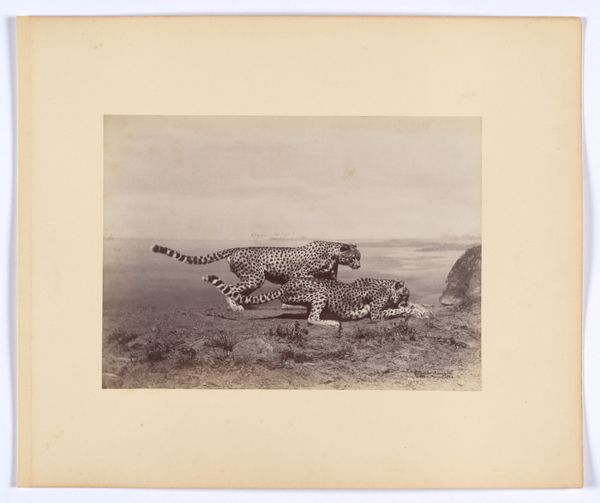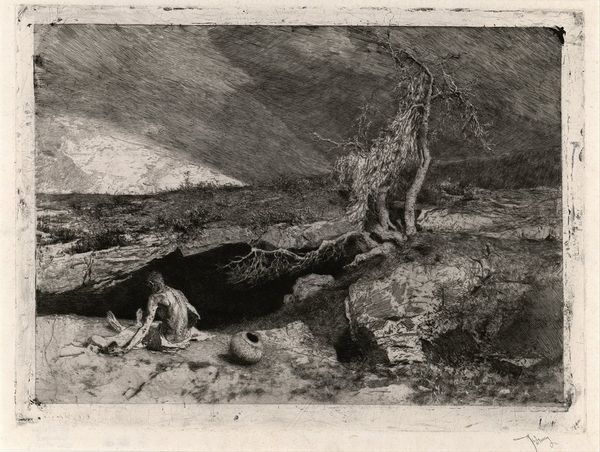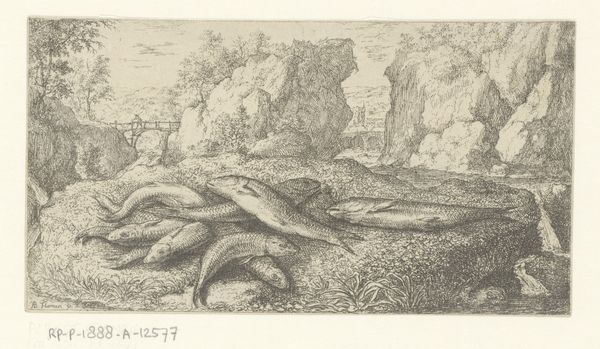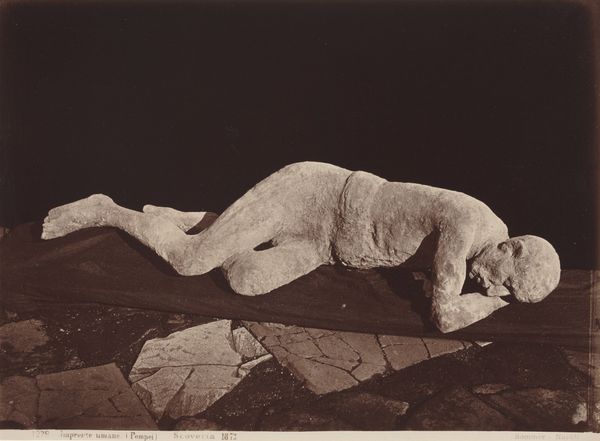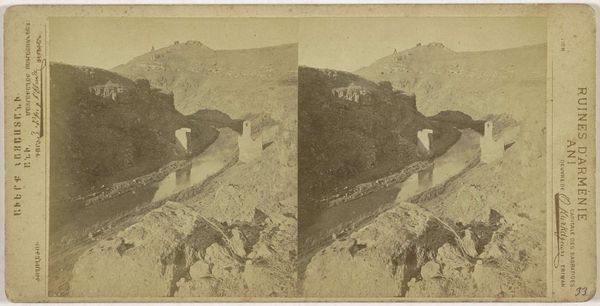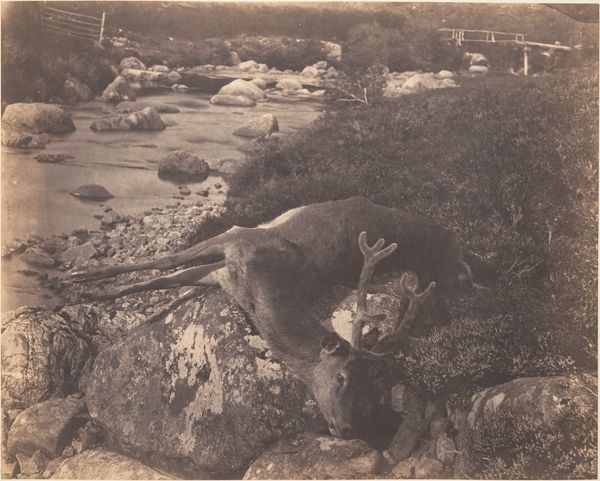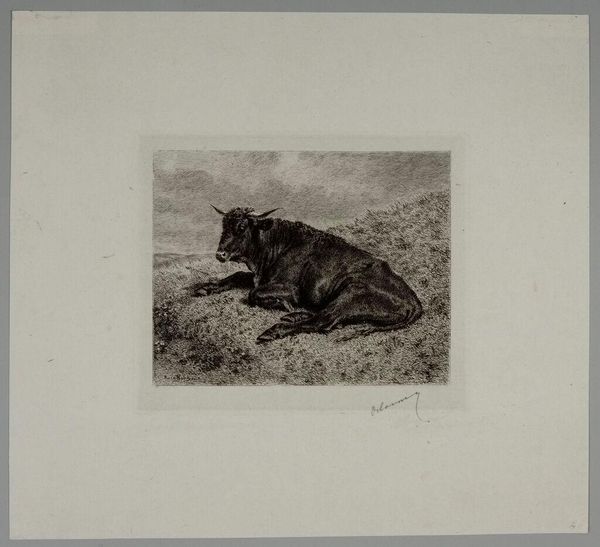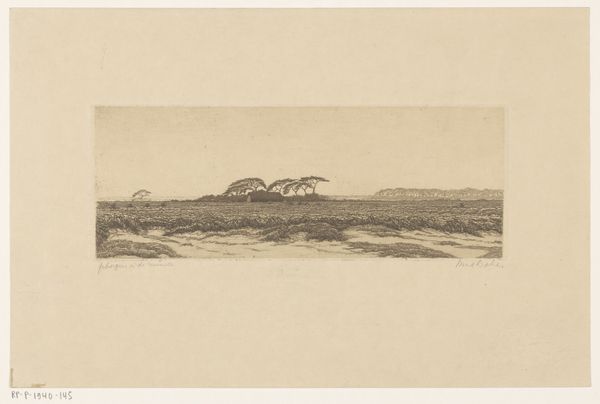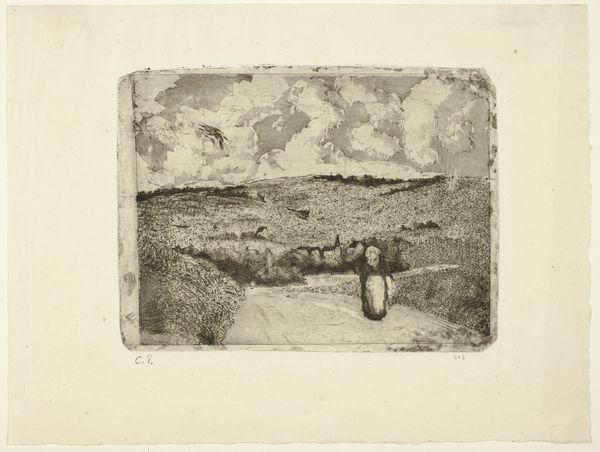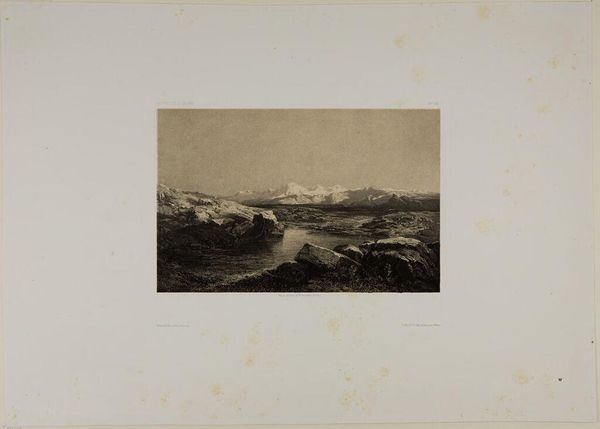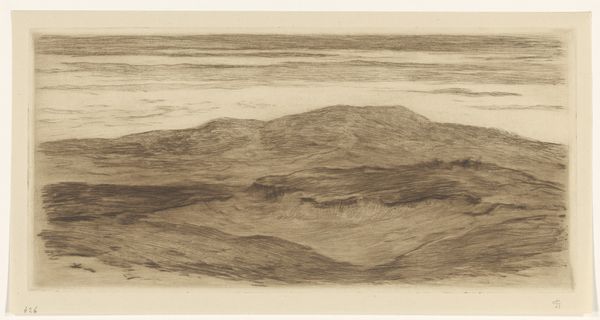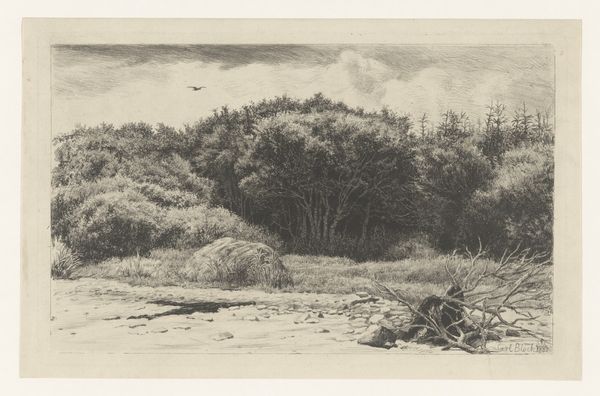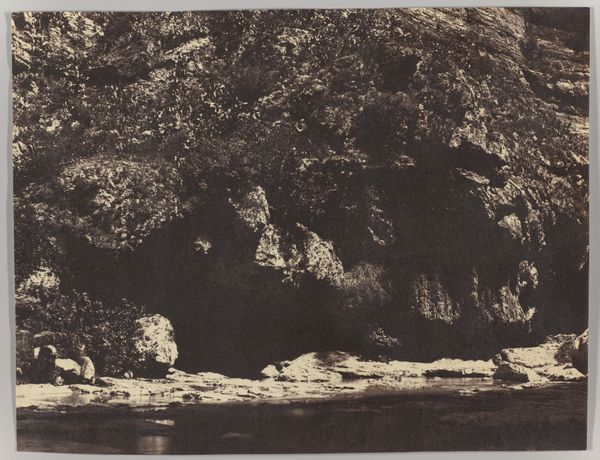
silver, print, photography, gelatin-silver-print
#
african-art
#
16_19th-century
#
silver
# print
#
nature photography
#
landscape
#
nature
#
photography
#
egypt
#
england
#
gelatin-silver-print
#
nature
#
realism
Dimensions: 15.5 × 23.1 cm (image/paper); 29.3 × 42.6 cm (album page)
Copyright: Public Domain
Editor: This is "Crocodile on a Sand-Bank," a gelatin silver print taken in 1857 by Francis Frith. The crocodile dominates the foreground; it feels ancient, almost like a primordial beast, and the scene feels both exotic and strangely still. What do you see in this photograph? Curator: The crocodile, basking on the banks of the Nile, isn’t merely an animal captured by a lens; it becomes a potent symbol, laden with cultural significance. Consider the Victorian era's fascination with Egypt, the "Orient," and the lure of the exotic "Other." The image of the crocodile then becomes intertwined with the Western gaze, of imperial ambition, scientific curiosity, and a bit of colonial swagger. What emotional baggage, do you think, travels with this particular symbol? Editor: So the photograph isn't just about capturing the animal itself, but the way the Victorians viewed it, or even wanted to view it? Curator: Precisely. Crocodiles, often associated with the Egyptian god Sobek, represented power, protection, and even fertility. They occupied a sacred, revered position within ancient Egyptian society, but by Frith’s time, with the advent of Egyptology and burgeoning colonial interests, that sacred position was arguably…transformed. Editor: Transformed into something to be documented and, in a way, possessed? Curator: Precisely. Now, look at how Frith has composed the image – the framing, the light. The crocodile is static, monumental. Consider the implied narrative. Is it a trophy from an explorer’s adventure? Or an object of natural scientific scrutiny? Or simply picturesque wildlife in a faraway place? Editor: I never would have thought there could be so many layers to a picture of a crocodile! Curator: Indeed. A simple image of wildlife becomes an eloquent representation of culture, history, and human perception. Editor: I'll certainly look at photographs differently now.
Comments
No comments
Be the first to comment and join the conversation on the ultimate creative platform.
